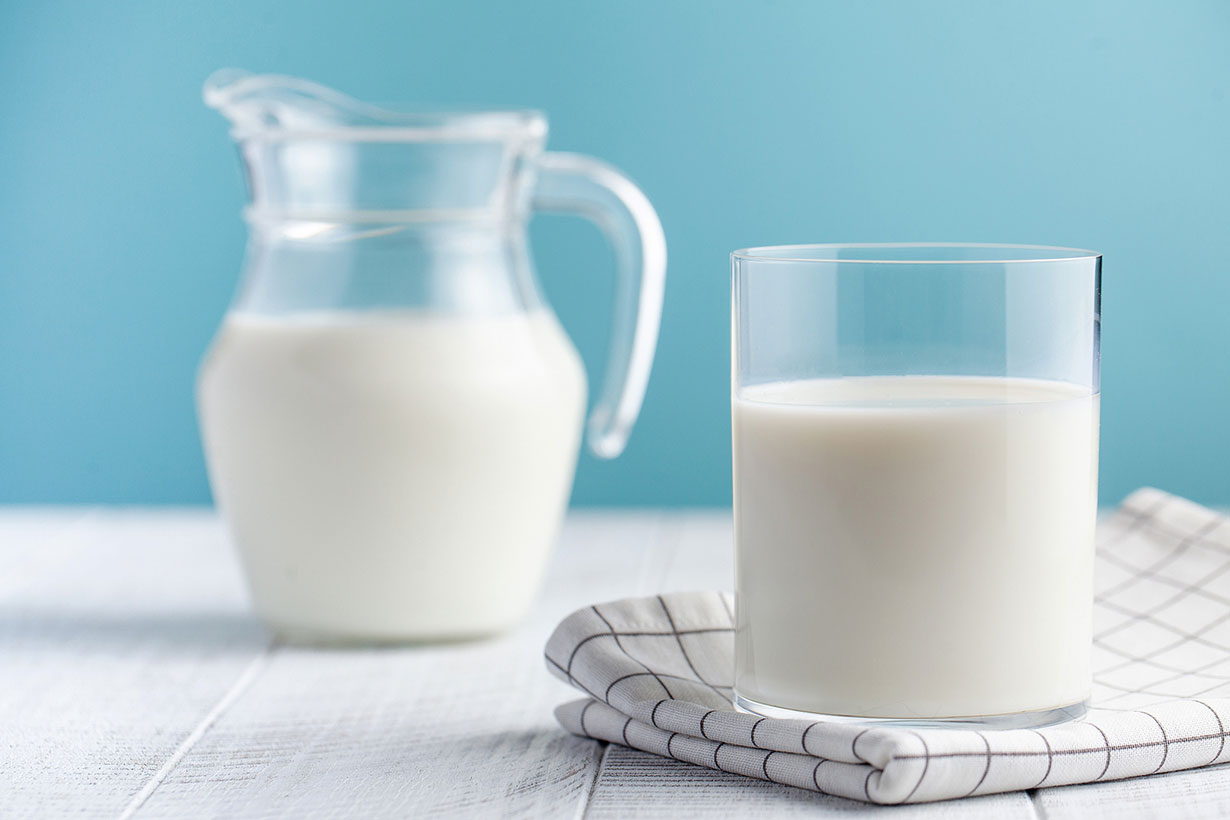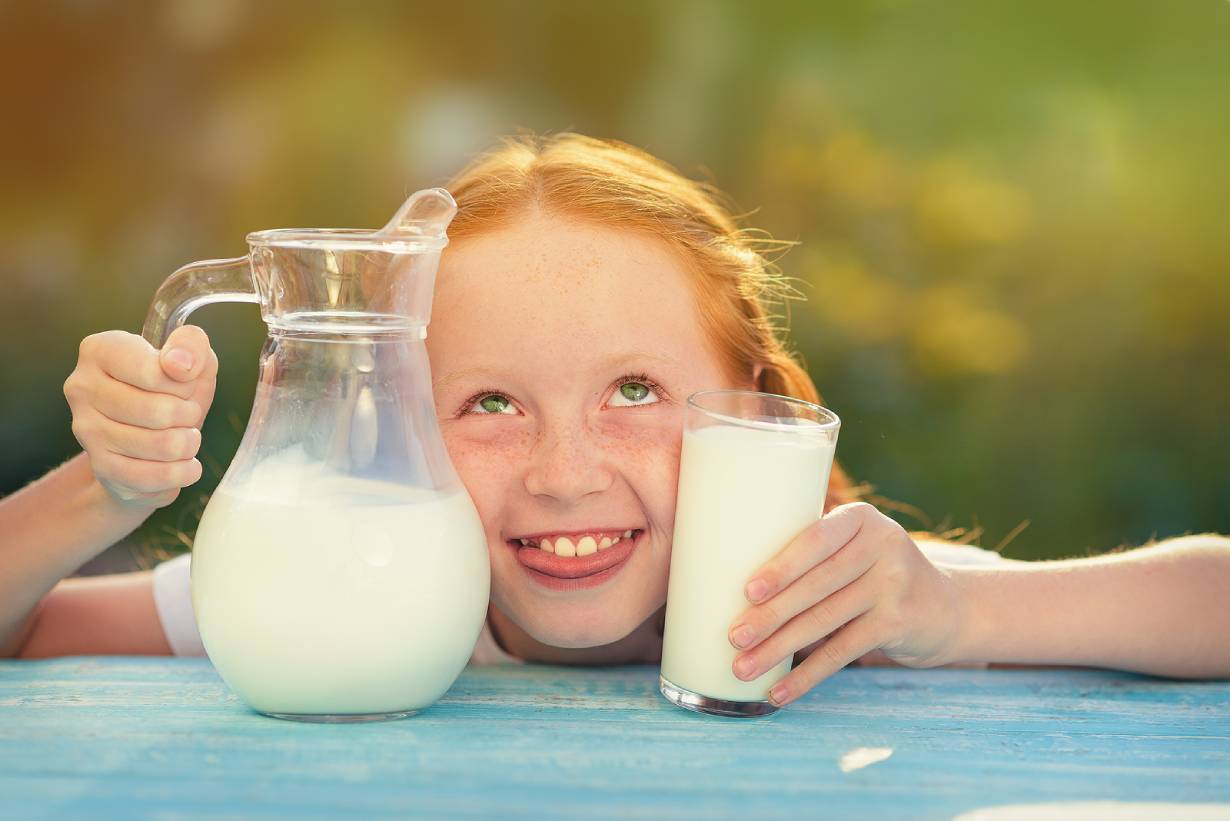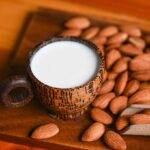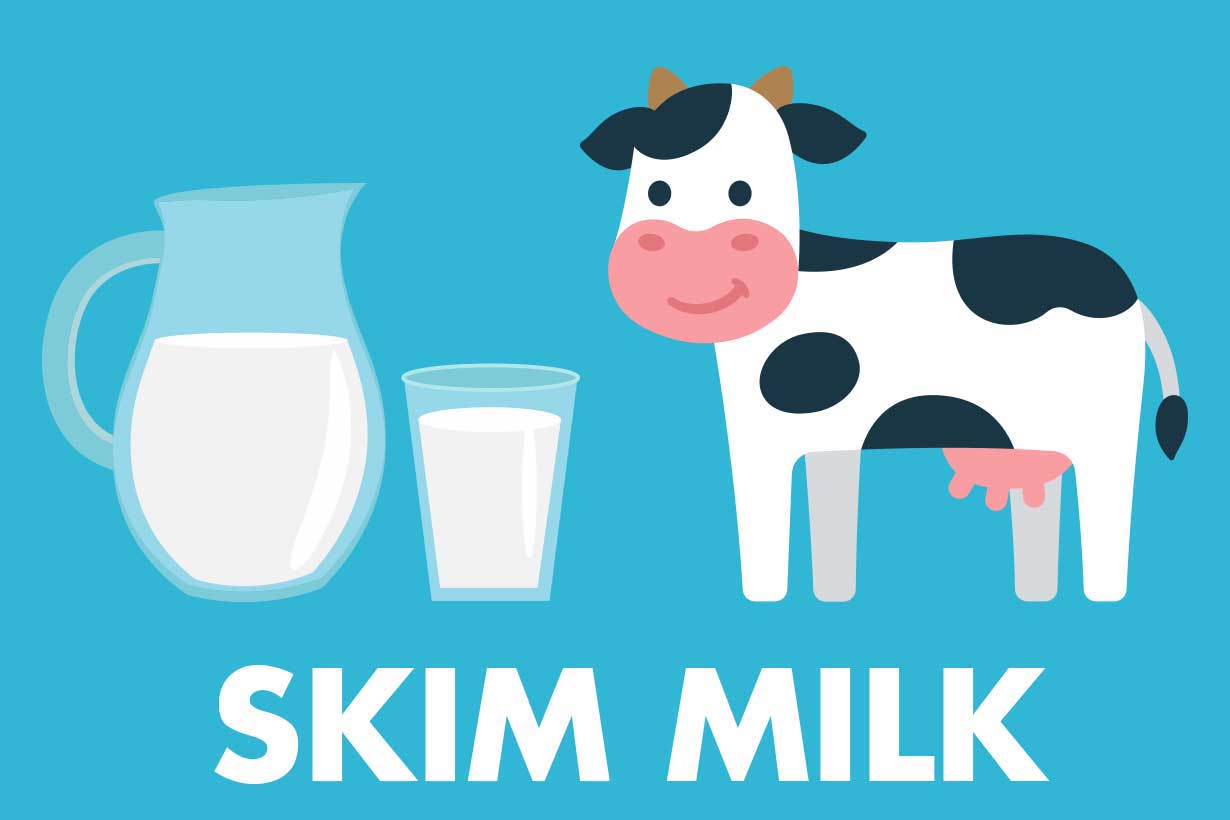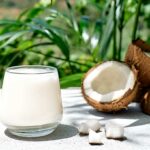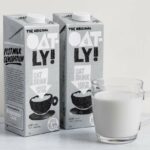Evaporated milk is a type of milk made by evaporating regular dairy milk.
This article provides a guide to evaporated milk, its nutritional benefits and downsides, and how to use it.
Table of contents
What Is Evaporated Milk?
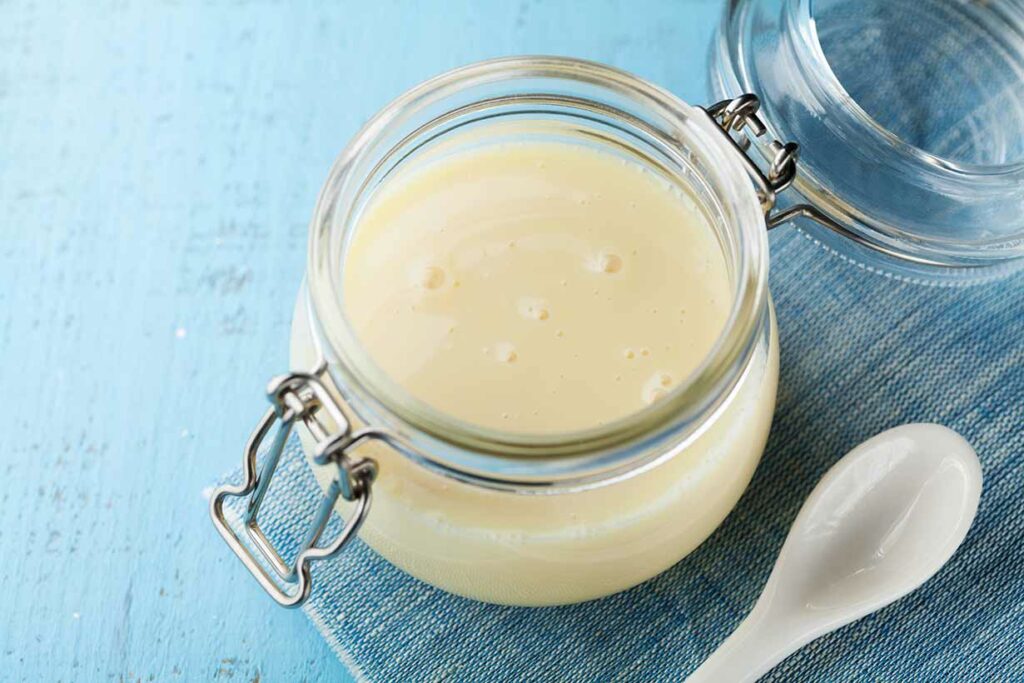
Evaporated milk is nothing more than regular dairy milk that has undergone an evaporation process.
Producing evaporated milk involves heating dairy milk so that a significant amount of its water content evaporates.
This process reduces the water content of the milk by approximately 50-60%.
Compared to regular milk, evaporated milk thus has a thicker texture and a sweeter, creamier taste.
Although evaporated milk has a high sugar content, this sugar is the naturally occurring lactose (milk sugar) found in milk. The sweeter taste is because there is not as much water to dilute the flavor after evaporation.
After being concentrated in an evaporator, the evaporated milk is homogenized and sterilized by exposure to intensive heat (1). This process preserves the milk and gives it longer shelf life.
The global evaporated milk market was worth $957.9 million in 2020 and is anticipated to be worth $1,162.8 million by 2027 (2).
In some countries, evaporated milk may also be known as ‘unsweetened condensed milk.’
Nutrition Facts
Just like regular dairy milk, there are various evaporated milk options, each with different fat content.
The following table shows the basic nutritional values for evaporated milk products per typical cup serving.
The source for all nutritional data is the USDA’s FoodData Central nutrition database. Daily values (% DV) have been calculated using this USDA data alongside the FDA’s recommended daily values (3, 4, 5, 6).
| Name | Evaporated milk (whole) | Evaporated milk (2% fat) | Evaporated milk (skim) |
|---|---|---|---|
| Calories | 338 kcal | 232 kcal | 197 kcal |
| Fat | 19.1 g (24.5% DV) | 4.94 g (6.3% DV) | 0.504 g (0.6% DV) |
| Saturated | 11.6 g (58% DV) | 3.05 g (15.3% DV) | 0.305 g (1.5% DV) |
| Monounsaturated | 5.9 g | 1.43 g | 0.156 g |
| Polyunsaturated | 0.617 g | 0.179 g | 0.015 g |
| Omega-3 | 0.197 g | 0.071 g | 0.005 g |
| Omega-6 | 0.421 g | 0.111 g | 0.01 g |
| Cholesterol | 73.1 mg (24.4% DV) | 20.2 mg (6.7% DV) | 10.1 mg (3.4% DV) |
| Sodium | 267 mg (11.6% DV) | 285 mg (12.4% DV) | 290 mg (12.6% DV) |
| Carbohydrate | 25.2 g (9.2% DV) | 28.2 g (10.3% DV) | 28.7 g (10.4% DV) |
| Fiber | 0 g | 0 g | 0 g |
| Sugars | 25.2 g | 28.2 g | 28.7 g |
| Protein | 17.2 g (34.4% DV) | 18.7 g (37.4% DV) | 19.0 g (38% DV) |
As we can see, all varieties of evaporated milk—even skim evaporated milk—contain more calories, carbohydrates, and protein than regular whole milk.
For a clear comparison, whole milk has the following profile per 244-gram cup: 146 calories, 11.4g carbohydrate, 7.81g fat, and 8g protein (7).
Vitamin and Mineral Profile
Based on USDA data for whole evaporated milk and the daily values, here is the vitamin and mineral profile per 252-gram cup (3, 6).
Vitamins
- Riboflavin (B2): 61.2% of the daily value (DV)
- Vitamin A, RAE: 18.2% DV
- Vitamin B12: 16.8% DV
- Choline: 14.6% DV
- Thiamin (B1): 9.8% DV
- Vitamin B6: 7.4% DV
- Vitamin C: 5.3% DV
- Folate, DFE: 5.1% DV
- Niacin (B3): 3.1% DV
- Vitamin E: 2.4% DV
- Vitamin K: 1.1% DV
Evaporated milk contains a wide range of vitamins but is particularly high in riboflavin, vitamin A, B12, and choline.
Minerals
- Calcium: 50.6% DV
- Phosphorus: 41.0% DV
- Zinc: 17.6% DV
- Potassium: 16.3% DV
- Magnesium: 14.4% DV
- Sodium: 11.6% DV
- Selenium: 10.5% DV
- Copper: 4.4% DV
- Iron: 2.7% DV
Evaporated milk provides more than 50% of the daily value of calcium per cup.
Additionally, it has high levels of phosphorus, potassium, magnesium, sodium, and selenium.
Does Evaporated Milk Contain Any Additional Ingredients?
The primary ingredient of evaporated milk is milk, and it should not contain any added sugars or fat.
However, depending on the brand, evaporated milk usually contains sodium phosphate, which stops the milk from coagulating (8).
Once again, evaporated milk may contain added vitamin A and D depending on the specific brand.
Benefits
Compared to regular dairy milk, evaporated milk can have specific benefits.
Here is an overview of these potential benefits.
Higher Amount of Nutrients Per Cup
Cup-for-cup (or gram-for-gram) evaporated milk has approximately double milk’s protein, vitamin, and mineral content.
As a result, it is possible to get the same nutritional value from half a cup of evaporated milk as from a full cup of regular milk.
Generally speaking, people don’t really drink plain evaporated milk, which is used more for recipes.
However, due to its concentrated nutrient provision, evaporated milk may be helpful for individuals needing to get nutritional value from smaller amounts of liquid.
Long Shelf Life
Whereas fresh, refrigerated milk lasts between days and weeks, evaporated milk can last for six months to a year unopened.
The ‘best by’ or ‘best before’ date printed on the can will indicate when the milk will have the best taste.
However, once opened, evaporated milk should be stored in the refrigerator and used within 3-4 days.
Can Be Useful For Recipes
Some recipes will specifically call for evaporated milk rather than regular milk, and there are good reasons for this.
For instance, a particular recipe may require milk’s fat, carbohydrate, and protein content but without too much liquid. In other words, a cup of whole milk may make the consistency of the recipe too runny.
However, evaporated milk can provide the same content as regular milk for approximately half the liquid. As a result, the desired milk solids can be added to the recipe without the larger amounts of additional water.
Can Be Used as a Milk Substitute
Due to evaporated milk’s consistency, thickness, and sweetness, it isn’t a life-for-like milk replacement.
However, if desired, it can be diluted with water (approximately one part evaporated milk, one part water) to resemble milk.
Easier To Ship and Store Than Fresh Milk
Another potential benefit of evaporated milk is that it is easier to ship and store than fresh milk.
In areas of the world with limited availability of fresh milk, shipments of evaporated milk can provide milk to the local population.
Downsides
As with most food products, evaporated milk also has some potential downsides.
Higher Lactose Content
Since evaporated milk contains more than double the amount of milk sugar as fresh milk, it has a far higher lactose content.
On this note, an article printed in the American Journal of Clinical Nutrition (AJCN) listed the lactose content of milk and milk products (9).
According to this AJCN text, fresh cow milk contains 4-5% lactose by weight. However, evaporated milk has a lactose content of 11%.
Since it contains more than double the amount of lactose, evaporated milk is likely unsuitable for many individuals with lactose intolerance.
That said, there are ‘lactose-free evaporated milk’ products that should rectify this issue.
Aside from the lactose issue, it is worth noting that evaporated milk has double the number of calories as milk. In other words, the serving size is crucial as it can be easy to over-consume.
How Does Evaporated Milk Differ From Condensed Milk?
Although evaporated milk and condensed milk may seem similar, there is a significant difference between the two.
Both these milk varieties have had their water content reduced through evaporation. However, condensed milk contains added sugar, whereas unsweetened evaporated milk does not.
It is also important to note that the added sugar condensed milk contains is in significant amounts.
To illustrate this point, here is how evaporated milk and condensed milk compare for calorie and sugar content per cup serving:
- Evaporated milk (whole): 338 calories and 25.2 grams of sugar per cup (3)
- Condensed milk (whole): 976 calories and 165 grams of sugar per cup (10)
Due to the understandable sweetness of condensed milk, it is typically used for making desserts and sweet sauces.
How To Use Evaporated Milk
There are many different uses for evaporated milk, and this depends on individual preferred tastes.
Here are some examples of ways to use the milk:
- As a topping on top of a fruit salad
- In black tea or coffee
- Add to curries, soups, and stews for a creamy texture and mildly sweet taste
- Diluted with water in a 1:1 ratio as a milk substitute
- Homemade sauces such as this cheese sauce
- For making a casserole
How To Make Evaporated Milk
Since the way to produce evaporated milk is relatively straightforward, we can quickly make it at home too.
Here is a simple procedure to follow to make it at home:
- To make 250 ml of evaporated milk, add 500 ml of milk to a cooking pot/pan of choice. Or use double the amount of milk as the desired amount of evaporated milk.
- Heat the milk until it starts to simmer while stirring occasionally.
- Keep the milk simmering and adjust the temperature if needed to ensure the milk doesn’t start to boil.
- After about 25-30 minutes, the evaporated milk should be ready. Over the process, the amount of milk should gradually reduce (to half the amount at the end), and it should take on more of a golden-cream color.
Common Questions About Evaporated Milk
It is possible to use evaporated milk rather than condensed milk at a 1:1 ratio. However, it depends on the desired traits of the finished recipe. For example, evaporated milk won’t be as sweet as condensed milk, and the texture won’t be quite as thick.
Evaporated milk contains approximately double the sugar content of regular fresh milk, and it is about 10-11% sugar by weight. However, it contains much lower sugar levels than sweetened condensed milk.
No food or drink inherently causes weight gain (or weight loss). It is the overall diet that counts. However, evaporated milk is an easy way to consume large amounts of extra calories, so it can certainly contribute to weight gain if regularly over-consumed.
Evaporated milk can have both benefits and downsides. It can contribute high amounts of protein, calcium, and other vitamins and minerals to the diet. However, it also provides high calories, fat, and sugar. Nevertheless, evaporated milk can fit into a healthy dietary pattern when consumed in moderation.
Yes, it can. (Whole) evaporated milk can replace whole milk when diluted with water – one part evaporated milk, one part water.
Final Thoughts
Evaporated milk is a concentrated source of the nutrients found in fresh milk.
It has the same nutritional benefits and downsides as fresh milk – but these benefits/downsides are more ‘concentrated.’
While evaporated milk has more beneficial nutrients than milk, it also contains higher calories, fat, and lactose levels.
For those who can tolerate milk products, evaporated milk can fit into a healthy dietary pattern when used in reasonable amounts.


